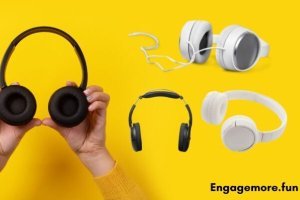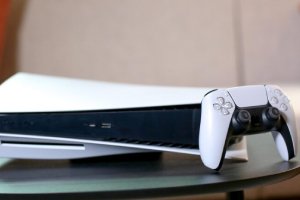
There are countless brands, styles, and costs of earphones, and it is undeniably challenging to track down an ideal couple for you. Who may not sell you on the pattern for VIP-supported earphones; however, perusing the spec sheet doesn’t simplify things. Earphone specs are complicated and highly specialised and, at times, even affect sound quality.
If you want to get the greatest headphones and earbuds, look no further. Hifiman is the best option. It is an online store that offers the best quality headphones, earphones, amplifiers, portable players, accessories, and much more at rock bottom prices. Buy now and get a 30% discount on HIFIMAN Coupon Code while shopping.
In this guide, we’ll slice through the language and show you what the critical earphone particulars mean and why — or on the other hand, if — they matter.
1. In-ear
In-ear (waterway) earphones, additionally known as in-ear screens or earbuds, sit straightforwardly inside the ear channel. They have two primary specialized benefits: they sit nearer to the eardrum to convey superb sound quality and likewise fill the entry to the ear, so they are powerful at fixing out outside clamor.
In-ear earphones accompany a determination of various estimated tips so you can find one that accommodates your ear trench. Getting the right fit is fundamental for accomplishing the best execution; utilizing wrong-sized information will influence good disengagement, and the headphones will incline to drop out.
In-ear earphones are incredibly compact, so they are generally advantageous for use in a hurry or at the rec center. Their more modest size, in any case, implies they can’t contrast in all-over execution with a more extensive set.
Apple’s AirPods are the most popular model. They come in both wired and remote structures. The last option is otherwise called genuine remote earbuds, and there are various highlights to pay special attention to while getting them.
2. On-ear
On-ear earphones, additionally called supra-aural earphones, lay on top of the ear. Like in-ear earphones, they direct sound straight down the ear channel yet don’t seal out outer commotions and may likewise spill clamor to those sat close by.
It’s critical to observe a couple that fits well. Many find it more agreeable than earbuds, and they are less inclined to trap heat on your ears than over-ear earphones are. “Clipping” can be an issue where they press too firmly and become awkward with broadened use.
On-ear earphones are a decent trade-off arrangement, with superb sound quality (in better quality sets) and a proper degree of conveyability.
3. Over-ear
Over-ear or circumaural earphones encase the whole ear. Their expanded size accounts for a more significant driver, with more robust volume and better bass execution. The Driver is additionally situated further away from the ear, delivering a more roomy sound similar to what you hear from speakers.
By covering the ear, these earphones offer excellent clamor seclusion. However, they are significantly less versatile than different arrangements. Even though it is at this point not consistent with expressing that over-ear earphones are naturally better compared to different styles, circumaural earphones stay the audiophiles’ decision.
Open and shut back
You’ll likewise see earphones (over-ear ones mainly) depicted as being, by the same token, “open back” or “shut back.” It alludes to whether the rear of the earcups is open or fixed.
“Shut back” earphones offer better commotion confinement and will quite often have a more powerful sound than what you get from in-ear earphones. “Open-back” earphones have more sound spillage and let in more encompassing commotion, yet convey what audiophiles frequently portray as a more familiar sound.
4. Drivers
The Driver is the central part of a couple of earphones. It transforms an electrical sign into sound strain — all in all, it makes the sound. There are various kinds of Drivers. However, they all comprised principally of magnets, voice curls, and a stomach. The parts make the stomach vibrate, and these vibrations produce sound waves that our ears decipher as sound.
On the earphone spec sheet, the Driver shows the distance across the stomach, estimated in millimetres. When in doubt — however, in no way, shape or form generally evident — the bigger the Driver, the better the sound, particularly for bass execution. A 40mm or more prominent Driver is a decent wagered on over-ear earphones.
Since in-ear earphones can’t fit an enormous driver, many adopt a double-driver strategy. Instead of having a solitary driver taking care of the whole recurrence range, there’s one explicitly for bass and one more for the mid and high frequencies.
This change is one of the primary reasons why earbuds are such a great deal better than what they used to be.
5. Awareness and Sound Pressure Level
Responsiveness and Sound Pressure Level (SPL) are connected terms, and who might utilize either on earphone spec sheets. They show how boisterous the earphones will go.
Responsiveness shows how effectively an electrical sign changes over into an acoustic signal. SPL is the way awareness is estimated and is frequently demonstrated as decibels of SPL per milliwatt (even though there is no outright norm for this).
Most earphones are inside the scope of 85-120dB of SPL per milliwatt. To give some specific circumstances, customary city traffic is around 80dB, a yelling voice 105dB, and a fly taking off 130dB.
6. Impedance
Impedance is a proportion of electrical opposition and is shown in Ohms. Higher impedance implies more obstruction in the least complex terms, which means more power is expected to drive the earphones.
Earphones intended for cell phones will, more often than not, have lower impedance, under 32 ohms, so they utilize less power. Top of the line and favorable to quality earphones have incredibly high impedance over 120 ohms and require a committed speaker to control them.
The disadvantage of bringing down impedance earphones is that they require a higher current while they utilize a lower voltage. An electrical flow makes a vibration, which like this, makes a sound. The outcome is that more cheap impedance earphones might discharge a discernible foundation murmur.
Impedance crisscrossing can likewise cause this and other exhibition issues. Confusion can happen while utilizing high impedance earphones with a cell phone or low impedance earphones with an excellent quality sound framework. It’s vital to have the right earphones for the sound gear you are utilizing.
7. Recurrence Response
Recurrence reaction shows the scope of sound frequencies the earphones can duplicate. It’s deliberate in Hertz, with the most reduced number addressing how much bass and the most elevated high pitch. Most earphones have an expressed recurrence reaction of around 20-20,000Hz, which matches human hearing.
The numbers are not exactly a decent mark of sound quality. However, they can assist you with picking the right earphones for a specific sort of music. For example, if you need bunches of bass, you should search for earphones that help a low bass recurrence.
8. Complete Harmonic Distortion
Absolute symphonious contortion (THD) shows the degree of bending there might be while utilizing earphones at a high volume.
As we’ve seen, earphones produce sound using a vibrating stomach in the Driver. The stomach will most likely be unable to vibrate quickly enough at high volumes, bringing about bending. THD is communicated as a rate, and lower is better. Most earphones have a THD of under 1%, and top-of-the-line sets are less.
9. Clamor Cancellation
Clamor-dropping earphones have inserted amplifiers and electronic chips. They record encompassing commotion, then make a backward solid wave and feed it into the earphones to offset the sound.
Furthermore, they’re one of the most mind-blowing office devices to help your inventiveness.
It turns out best for consistent, low frequencies and is less successful for mid-range frequencies or more. Thus, on the off chance that you’re on a flight, you might observe motor commotion decreased, however not the crying child in that frame of mind in front.
Commotion undoing requires battery power. Its viability can differ extensively, starting with one headset model and then the next. See our aide on how surrounding sound-blocking earphones work for more detail.
10. Clamor Isolation
Clamor confining earphones truly block outside sounds. It is either with over-ear, shut-back earphones encasing the whole ear or, more successfully, in-ear earphones fixing the ear channel.
In this regard, in-ear earphones work like earplugs, and you should get the most secure conceivable seal by utilizing the right measured ear tips.
Clamor segregation is inactive — it doesn’t need an external power supply — and isn’t restricted to specific frequencies. In general, it will show up in other reasonable earphones than commotion-dropping innovation.
Seeing Good Earphone Specs
Earphone details are a shockingly confounded business, and you want a decent handle of material science, hardware, and math to have the option to dive into what they mean genuinely. And after it’s all said and done, the straightforward reality is that you can’t perceive the nature of a couple of earphones just by a progression of numbers on a spec sheet.
Also, cheer up when you experience new terms and specs we haven’t referenced above — probably the most excellent choice you’ll make while purchasing is whether to go for Bluetooth or wired earphones. Albeit that will be directed by whether the gadget you’ll tune in on has an earphone jack.
You can utilize specs to limit your decision and distinguish those that suit your #1 style of music, the climate you involve them in, and the good stuff you’re utilizing them with. You ought to check surveys and client reports to determine precisely how well they perform whenever you’ve done that.







